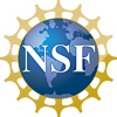Boyne River computational model
Participation of the general public (citizen science) and do-it-yourself sensor systems have transformed hydrologic research. Such transformation touches conventional monitoring and modeling approaches in ungauged basins, where the application of complex hydrological models is limited. Do-it-yourself sensor systems and crowd-sourced data have the potential to bridge that data gap; however, only few studies have exploited this capability.
This study explores the potential for real-time crowd-sourced data to improve complex computational hydrologic models. We selected the Boyne River basin in northern Michigan as a case study to demonstrate crowd-source data assimilation in distributed hydrological models. We utilized CrowdHydrology, a citizen science network that collects hydrologic data throughout the United States, to obtain local stream stage and stream temperature measurements. CrowdHydrology provides an infrastructure for citizen scientists to voluntarily send a text message with the current water stage height and stream temperature to a server located at the University at Buffalo.
Our approach retrieves CrowdHydrology observations and weather data on a weekly basis from a nearby weather station. Stream stage citizen science observations are processed to obtain streamflow discharge based on field-derived stage-discharge relationships at four locations along the river. This database of observations was used as input to a Soil and Water Assessment Tool (SWAT) model of the Boyne River basin. Within this framework, the hydrologic model is re-calibrated on a bi-weekly schedule using the ensemble Kalman filter. Each new calibrated model provides a more accurate estimate of a 7-day forecast of streamflow and stream temperature throughout the river basin. This novel approach can potentially benefit small communities by providing information on local water resources derived from complex hydrological models.
This research is financially supported by the National Science Foundation (NSF) and Lilly Endowment, Inc., through its support for the Indiana Univeristy Pervasive Technology Institute. We acknowledge the Friends of the Boyne River for their role in community engagement, support during field visits, and maintenance of the CrowdHydrology network. The team gratefully acknowledge the active participation of citizen scientists near the Boyne River.




